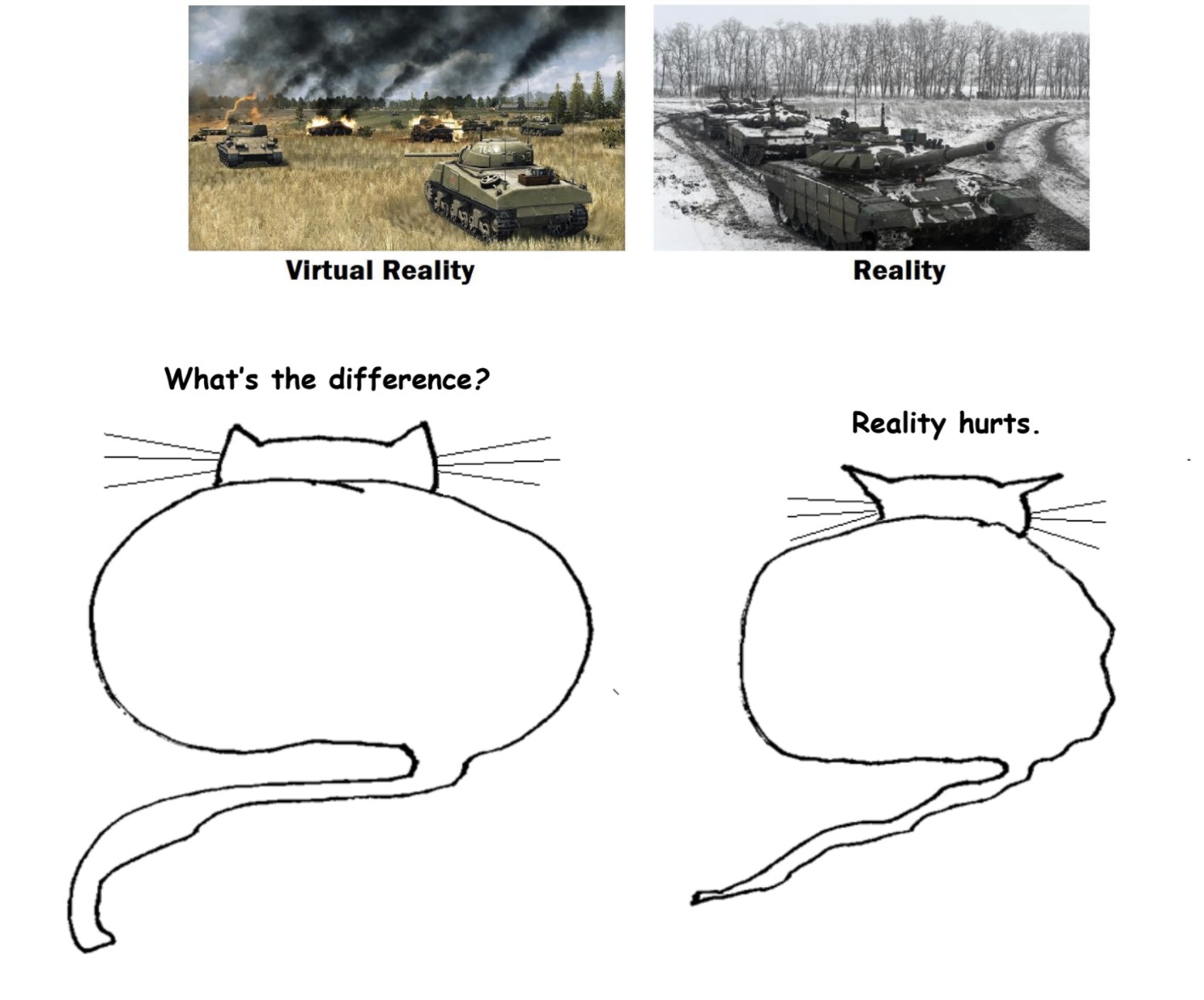by Brooks Riley

by Brooks Riley

by Joseph Shieber

When Theodor Adorno composed the aphorisms that formed the first section of Minima Moralia, he was living in exile in Los Angeles in the mid 1940s, a refugee from Nazi Germany. One of the most famous quotes by which Adorno is more widely known, “Wrong life cannot be lived rightly,” is from the 18th aphorism of Part I of the Minima Moralia, in an aphorism entitled “Asylum for the homeless.”
As is typical for many of the aphorisms, “Asylum for the homeless” begins with a pointed cultural criticism before broadening its focus to draw a wide-ranging conclusion about the possibility of a good life in late capitalism.
The pointed cultural criticism with which Adorno begins “Asylum for the homeless,” despite its title, doesn’t literally concern homelessness, but rather with the discomfort attendant with not feeling at home in one’s place of residence. He criticizes “traditional dwellings, in which we grew up,” because “every mark of comfort therein is paid for with the betrayal of cognition; every trace of security, with the stuffy community of interest of the family.” On the other hand, “functionalized [dwellings], constructed as a tabula rasa, are cases made by technical experts for philistines, or factory sites which have strayed into the sphere of consumption, without any relation to the dweller” (translation by Dennis Redmond, here).
This emphasis on the contradictions inherent in attempting to feel at home might seem bizarre, considering the horrors facing those who were literally homeless at the time Adorno was writing: destitute refugees fleeing conflict, or the Japanese Americans forced into internment camps in southern California, not to mention Adorno’s co-religionists at death camps in central Europe. In contrast, during this period, Adorno himself lived in a lovely bungalow, “a quiet nice little house in Brentwood, not far, by the way, from Schönberg’s place,” as he described it in a letter to Virgil Thomson (for quotes from Adorno’s letters to Thomson, I am indebted to a blog post from James Schmidt’s blog, Persistent Enlightenment). Read more »
by Jochen Szangolies

In last month’s column, I argued for the notion that life does not neatly decompose into individual life-forms—fish, fungi, firs, and humans. Instead, we are all just part of the same life expressed in many bodies, the way the one life of the butterfly is expressed in the two bodies of the larva (the caterpillar) and the imago (the winged form we typically think of when talking about butterflies). The argument wasn’t intended to foster some kind of hand-holding-moment of ‘we’re all in this together’ (not just, at least), but instead, was meant to chip away at what I believe to be two of the greatest obstacles towards meaningful collective action in the face of global existential crisis: locality of concern and despair of scale.
By locality of concern, I don’t merely mean being of the opinion that everything revolves around one’s own particular affairs—although that may be an expression of it. Rather, I mean the notion that one’s reasons for action are mostly or wholly centered on one’s own experience within the world—and may thus be in opposition to that of others. The idea that we’re all part of the same life contravenes this, by for instance making harm to ‘other’ life a form of self-harm—something that’s not just morally wrong, as most might agree it is, but simply irrational, like cutting off a perfectly functional thumb—like the caterpillar trying to get back at the butterfly because it envies its ability to fly.
But I believe that the other factor, despair of scale, may be yet more damaging, and it is this that I’ll be concerned with here. Read more »
by Derek Neal
 We have many choices when deciding what to eat. For most of human history, however, there has likely been little to no choice at all: people ate what was available to them or what their culture led them to eat. Now things are not so simple. As I mentioned in Part 1, people go to great lengths in organizing and planning their eating, whether it be by using meal preparation kits, following a restrictive diet, or adopting another culture’s cuisine as their own. Another way of deciding what to eat, and this way will be recognizable to most, is by following the food pyramid. Once ubiquitous, the pyramid has largely gone out of fashion, and in fact it was replaced by the much less memorable “MyPlate” graphic in 2011. The pyramid and plate graphics are part of the United States government’s nutrition guides, which can be broadly taken as indicating the general public’s understanding of and relationship to food. This is not to say that most people try to achieve the guidelines set out by the pyramid or the plate, but that in examining how food is represented graphically—in a hierarchical fashion with the pyramid or in an individual fashion with MyPlate—we can see how Americans conceive of what food is (or how the government thinks Americans ought to understand food), and how this has changed over time. Read more »
We have many choices when deciding what to eat. For most of human history, however, there has likely been little to no choice at all: people ate what was available to them or what their culture led them to eat. Now things are not so simple. As I mentioned in Part 1, people go to great lengths in organizing and planning their eating, whether it be by using meal preparation kits, following a restrictive diet, or adopting another culture’s cuisine as their own. Another way of deciding what to eat, and this way will be recognizable to most, is by following the food pyramid. Once ubiquitous, the pyramid has largely gone out of fashion, and in fact it was replaced by the much less memorable “MyPlate” graphic in 2011. The pyramid and plate graphics are part of the United States government’s nutrition guides, which can be broadly taken as indicating the general public’s understanding of and relationship to food. This is not to say that most people try to achieve the guidelines set out by the pyramid or the plate, but that in examining how food is represented graphically—in a hierarchical fashion with the pyramid or in an individual fashion with MyPlate—we can see how Americans conceive of what food is (or how the government thinks Americans ought to understand food), and how this has changed over time. Read more »
Found Frederica Krueger sleeping in my bed like this.
by Claire Chambers

Maniza Naqvi’s new novel The Inn, published by Maktab-e-Danyal, is about that moment when summers of love and friendship begin a slow-motion nosedive into an autumn of sexual malice and drawn-out feuds. Sal, the novel’s protagonist, is a middle-aged radiologist originally from Pakistan. At the turn of the twenty-first century, he is living in Washington DC. There he spends much of his time holed up in a lab checking intimate X-rays of patients’ organs and body parts for tell-tale signs of disease. At other moments he is responsible for giving these patients and their relatives the worst possible news. A turning point comes when, first, he has to tell two young parents that their child is dying. Second, around the same time, a neighbour from the same apartment block as Sal dies a lonely death. This tenant’s body is only found because it starts to putrefy and the smell permeates other flats.
Sal, a workaholic and divorcee who has hitherto not had much time for reflection, is by dint of these two deaths confronted with his own life’s emptiness. He gains a heightened awareness of America’s loneliness epidemic and obsession with privacy, and becomes desperate to make his own life more meaningful. In a quest for the pastoral lifestyle and to meet new friends, he rents a room at the titular Inn in the Virginian countryside. The inn’s owners, Billy and Sylvia, make a show of welcoming him and introducing him to their friends and to other guests. Independently, Sal also meets Maribeth, a beautiful widow who lives nearby. He gradually falls in love with this woman from such a different background to his own, who is warm-heared despite seeming right-wing and far from sensitive in her manner of speaking. Naqvi boldly positions her ageing characters, both male and female, as attractive, desiring and desired. In this sunny environment, Sal seems to be finally putting down roots and making a home for himself in the United States. Read more »
by Omar Baig

Conservative and Evangelical Christians—with their provincial notions of Jesus as dying on the cross for their sins—denounce the Cosmic Christ of Father Richard Rohr as new age heresy. Yet some Christians may not even realize that Jesus and Christ are not the same. As if, he jokes, Christ was simply the last name of Jesus. By building off the Franciscan mysticism he was ordained in, Fr. Rohr defends the “alternative orthodoxy” of an eternal Christ, through which material reality fully coincides with the spiritual. Bible verses like Colossians 1:17-20 portray Christ as “before all things,” including the Jesus of Nazareth, since “in Him all things hold together.” Ephesians 1:13 affirms our “inherent union” with Christ, for “you too have been stamped with the seal of the Holy Spirit.”
Over three decades of accusations—as an apostate, false prophet, or wolf in sheep’s clothing—have compelled Fr. Rohr to ground his seemingly unorthodox and progressive theological views with extensive biblical scripture and scholarly references. Despite a formal investigation by the Vatican, Rohr remains a priest in good standing with the Catholic Church. Scrutiny only bolsters his belief that one must first know the rules well enough before knowing when they do not apply. Like the cosmos itself, the Jesus of the gospel affirms two parallel drives toward diversity and communion. Rohr’s 1999 essay, “Where The Gospel Leads Us,” for example, extends God’s unconditional love to the whole of creation: since all relationships, including LGBT ones, demand “truth, faithfulness, and striving to enter into covenants of continuing forgiveness of one another.”
Yet most will never move beyond Ken Wilbur’s first stage of spiritual development, which is preoccupied with cleaning up their own self-image as a Good Christian. They judge, put down, and exclude others for their differing practices or views as Bad Christians. Rigid purity codes generate the respectability politics of each church by policing their member’s social behavior and determining their relative standing. This parallels the ego-formation and social conformity of early childhood development, when our sense as an individual separates from our sense of others. But defining yourself by who you aren’t is what led to the extreme polarization of our current politics. Each identity group seems to define themselves more by what they think is wrong with other groups, rather than rally around their shared beliefs or goals. Read more »
by Pranab Bardhan
All of the articles in this series can be found here.
 I enjoyed my days in Delhi School of Economics, but some aspects of the university’s policy in recruitment and promotion of teachers used to trouble me. Let me just give two examples. One is from DSE itself, but illustrative of a much more general problem in university life. We had a middle-aged colleague who had long wanted to be promoted to Readership (Associate Professorship), but failed in the usual process, because he had not done any serious research to speak of in many years. He was full of leftist clichés, and was popular with some sections of leftist students. He first started complaining that he was being passed over in promotion because his ‘right-wing’ colleagues (the term used in Economics those days was ‘neo-classical’—in the same pejorative way the term ‘neo-liberal’ is used nowadays) were biased in undervaluing his work. This after a time did not work, as even some leftist scholars in the Department shared views similar to those of the ‘right-wing’ colleagues on this matter. Then he tried a different tack.
I enjoyed my days in Delhi School of Economics, but some aspects of the university’s policy in recruitment and promotion of teachers used to trouble me. Let me just give two examples. One is from DSE itself, but illustrative of a much more general problem in university life. We had a middle-aged colleague who had long wanted to be promoted to Readership (Associate Professorship), but failed in the usual process, because he had not done any serious research to speak of in many years. He was full of leftist clichés, and was popular with some sections of leftist students. He first started complaining that he was being passed over in promotion because his ‘right-wing’ colleagues (the term used in Economics those days was ‘neo-classical’—in the same pejorative way the term ‘neo-liberal’ is used nowadays) were biased in undervaluing his work. This after a time did not work, as even some leftist scholars in the Department shared views similar to those of the ‘right-wing’ colleagues on this matter. Then he tried a different tack.
The university recruitment and promotion process was quite arbitrary. Decisions were taken by a selection committee chosen entirely by the Vice-Chancellor, and in the committee meeting the only other people who could take part in the decision were the Chairperson of the Department and the Vice-Chancellor. Thus the Vice-Chancellor played a crucial role in the process. So this leftist colleague became noisily active in the campus-wide teachers’ union, and soon was influential particularly with the leftists there. On various campus-wide issues he made it obvious to the Vice-Chancellor that he could make his life difficult. The Vice-Chancellor, a shrewd man, tried to pre-empt him, and knowing fully well his ulterior motive, soon carefully chose a selection committee stacked to select this man. The Department Chairman, representing the faculty opinion, was in a hopeless minority in this selection process, and the man got what he wanted all these years. Read more »
by Michael Liss
Whoever attentively considers the different departments of power must perceive, that, in a government in which they are separated from each other, the judiciary, from the nature of its functions, will always be the least dangerous to the political rights of the Constitution; because it will be least in a capacity to annoy or injure them. –Alexander Hamilton, Federalist 78
 It’s my oldest memory. I am three, standing harnessed between my parents, in a brand-new two-seater 1959 Jaguar convertible roadster. We are on an empty gravel road someplace in Virginia and my Dad decides to let his new baby fly. I can see In front of me the windshield and, below, a gray leather dashboard that has two things of great interest…a speedometer and a tachometer. The motor hmmmmmms as he takes the car through the forward gears, the tachometer first rising and then falling, the speed increasing. The big whitewall tires are crunching the rough road; cinders are flying; we hit 60 MPH, then 70, then 80; and I’m clapping my hands and piping out “Faster, Daddy! Faster!” My mom goes from worried to furious “Slow down, Ernie, slow down!” As he passes 90, I look down for a moment and she’s slapping her yellow shorts. I peek at the rearview mirror and see a huge cloud of dust. 95, 100, and finally 105. Then without warning, and without using the brakes, he starts to slow, gradually downshifting; the speedometer and tachometer fall; and that’s where my memory ends.
It’s my oldest memory. I am three, standing harnessed between my parents, in a brand-new two-seater 1959 Jaguar convertible roadster. We are on an empty gravel road someplace in Virginia and my Dad decides to let his new baby fly. I can see In front of me the windshield and, below, a gray leather dashboard that has two things of great interest…a speedometer and a tachometer. The motor hmmmmmms as he takes the car through the forward gears, the tachometer first rising and then falling, the speed increasing. The big whitewall tires are crunching the rough road; cinders are flying; we hit 60 MPH, then 70, then 80; and I’m clapping my hands and piping out “Faster, Daddy! Faster!” My mom goes from worried to furious “Slow down, Ernie, slow down!” As he passes 90, I look down for a moment and she’s slapping her yellow shorts. I peek at the rearview mirror and see a huge cloud of dust. 95, 100, and finally 105. Then without warning, and without using the brakes, he starts to slow, gradually downshifting; the speedometer and tachometer fall; and that’s where my memory ends.
I have been thinking about writing a Supreme Court piece since the conservative bloc’s muscle-flexing on Texas’s SB-8 abortion law, and, each time I do, the memory of that beautiful sportscar flying down the road keeps gnawing at me. The thrill of it, the uncertainty, the obvious danger. My Dad’s going through whatever decision-making process he did to start, continue, and end.
We’ve got a new Sheriff in town, a new driver for that beautiful car. Justices Thomas, Alito, Kavanaugh, Gorsuch and Barrett are taking the wheel and the throttle. Just where is their ultra-conservative vision taking us, and at what cost? Read more »
by Usha Alexander
[This is the seventeenth in a series of essays, On Climate Truth and Fiction, in which I raise questions about environmental distress, the human experience, and storytelling. All the articles in this series can be read here.]
 The peopling of Polynesia was an epic chapter in world exploration. Stirred by adventure and hungry for land, intrepid pioneers sailed for days or weeks beyond their known horizons to discover landscapes and living things never before seen by human eyes. Survival was never easy or assured, yet they managed to find and colonize nearly every spot of land across the entire southern Pacific Ocean. On each island, they forged new societies based on familiar Polynesian models of ranked patrilineages, family bonds and obligations, social care and cohesion, cooperation and duty. Each culture that arose was unique and changeable, as islanders continually adjusted to altered conditions, new information, and shifting political tides. Through trial and hardship, most of these civilizations—even on some of the tiniest islands, like Anuta and Tikopia, discussed in the preceding essay—persisted for centuries or millennia, up to the present day. But others faltered, failing to thrive or even to maintain continuity.
The peopling of Polynesia was an epic chapter in world exploration. Stirred by adventure and hungry for land, intrepid pioneers sailed for days or weeks beyond their known horizons to discover landscapes and living things never before seen by human eyes. Survival was never easy or assured, yet they managed to find and colonize nearly every spot of land across the entire southern Pacific Ocean. On each island, they forged new societies based on familiar Polynesian models of ranked patrilineages, family bonds and obligations, social care and cohesion, cooperation and duty. Each culture that arose was unique and changeable, as islanders continually adjusted to altered conditions, new information, and shifting political tides. Through trial and hardship, most of these civilizations—even on some of the tiniest islands, like Anuta and Tikopia, discussed in the preceding essay—persisted for centuries or millennia, up to the present day. But others faltered, failing to thrive or even to maintain continuity.
Most Polynesian societies that met the tragic fate of famine and disintegration were on remote islands measuring but a few square miles. But size alone was not the decisive factor. In fact, the most famous case occurred on a substantially larger island of about sixty square miles, called Rapa Nui1, widely known as Easter Island. Despite its relatively generous size, Rapa Nui suffered certain drawbacks. Owing to its more southerly latitude, outside the tropics, it was cooler, drier, and windier than most Polynesian islands—suboptimal conditions for some of their primary crops. Freshwater sources were also few, relative to the island’s size, and sometimes difficult to access. And the cooler surrounding ocean didn’t support the shallow reefs more common to tropical seas, making the islanders’ survival dependent on deep-sea fishing.
On the other hand, when the migrants first arrived, almost eleven hundred years ago, the pristine island was crowned with a dense forest of enormous trees, including a colossal species of palm found nowhere else on Earth, as well as other edible and useful plants. Small fish and shellfish could be gathered along the coast. In addition to several species of non-migratory birds inhabiting the forestland, seabird rookeries crowded the surfaces of rocky mounts just offshore. And the island’s three dormant volcanoes provided great quarries of stone suitable for making fine tools. The fate of the Rapanui people was in no way preordained. Read more »
7 a.m. sungold flings photons from mountaintop across the river
yesterday’s snow clings to a hedge of arbor vitae’s shadowgreen
just as Mom’s flour dusted the tools of her art upon the table
sifter, spatula, cups and spoons as if a painting of an arctic fable
her baked art emerges from oven fresh in probed corners of recall
warm scents sweet against this day’s elements
the twisted angularity of our apple tree spreads from hoop-house
to the spent purple plum, dead limbs an armature for the reach of Trumpet vine,
plumwood backbone for its thin vine limbs and orange bell-blossoms
which in summer float upon green raft blowing reveille for the garden
here now frozen
….. suddenly
….. unexpected
….. a gift
….. a grace
….. that came
….. ,
….. not
….. chosen
Jim Culleny
2/26/2022
by Akim Reinhardt
 The United States has always faced a fundamental tension. On one side are those who champion, enforce, and/or profit from hierarchies of power: white supremacist racism, sexist patriarchy, Christian fundamentalism, and capital concentrations chief among them. Arrayed against these hierarchies of power are people who promote and work for racial equality, gender and sexual equality, cultural tolerance, the amelioration of poverty, and genuine freedom both for and from religious beliefs and practices.
The United States has always faced a fundamental tension. On one side are those who champion, enforce, and/or profit from hierarchies of power: white supremacist racism, sexist patriarchy, Christian fundamentalism, and capital concentrations chief among them. Arrayed against these hierarchies of power are people who promote and work for racial equality, gender and sexual equality, cultural tolerance, the amelioration of poverty, and genuine freedom both for and from religious beliefs and practices.
For nearly two and a half centuries, these tensions have produced victories and defeats for all sides. While more of course remains to be done: the 20th century witnessed a steady rise in poor people’s (and everyone else’s) quality of life; women began making substantial advances a hundred years ago; racial, ethnic, and religious minorities have made important gains since World War II; LGBT people have achieved remarkable progress during the last half-century; and more recently, agnostics and atheists have begun carving out spaces of acceptance.
While these struggles are all longstanding, dividing lines are usually not very simple or clear cut. Ever since settler colonial slave owners began authoring stirring documents about freedom, many Americans have been on the side of freedom and equality on an issue or two, and against it on others. History offers no shortage of racist feminists, sexist civil rights workers, exploitative plutocrats who seek to help the poor in their spare time, homophobes of every stripe, and so on. Because there are so many divisions and contests, and because the lines of alliance and contestation are often unclear and shift over time, the major U.S. political parties have historically teetered back and forth on various issues. Read more »
by Leanne Ogasawara

1.
It was Tetsuya’s idea to start calligraphy lessons.
I had wanted to study Aikido. But according to Tetsuya, I was already dangerous enough. “And, anyway,” he said, “You know what Confucius said: the pen is mightier than the sword.”
“Confucius definitely did not say that.” I rolled my eyes.
His idea, however, grew on me. So, a few weeks later, the two of us found ourselves standing in front of a tidy, two-story home in suburban Hachioji. Located at the end of the Keio line, Hachioji is as far west as you can travel in Tokyo without arriving in Kanagawa Prefecture.
A few days before our first class, Tetsuya had a long consultation by phone with the teacher, Yufu-sensei, and it had been decided that I should be placed in the class with grammar school students, since at that point I only knew the kanji through 5th grade. When I tried to resist being in a class of kids, Tetsuya told me to get rid of my pride immediately or this won’t end well for you.
Anyway, he said, he would sit in the class with me to make sure I was okay. With that promise, I felt confident. Tetsuya had beautiful handwriting. He was already proficient at writing with brush and ink, though he told me that all he could manage was kaisho, the “square style” or “standard style.” Kaisho is the first style that shodō practitioners usually learn and master, he said.
The lessons were held on the second floor of the teacher’s home. A hush fell over the room as we entered. Not only were adults joining the kids’ class but one of those adults was not Japanese. Definitely not Japanese.
The children just stared in disbelief. Read more »
by Rafaël Newman

It’s the final day of February 2022, a month that began with the centenary of the publication, on February 2, 1922, of Ulysses, on what was also the 40th birthday of its author, James Joyce. Commemorations were held, among other places, in Dublin, where Joyce was born and which plays a central role in the novel, and in Zurich, where Joyce wrote parts of Ulysses, where he died, and where he is buried.
The commemoration in Zurich took the form of an all-day reading of sections of the novel at thematically appropriate locations throughout the city. The marathon was organized by friends of the James Joyce Foundation, a center for the study of the writer’s works under the direction of the eminent Swiss Joyce scholar Fritz Senn; and because I have myself been involved in other events organized by the Foundation, and count among my acquaintances people associated with it, I was asked to take part, on Saturday, February 5, as a reader.
 By a happy chance, the section I was invited to read from, alongside Andreas Flückiger and William Brockman, two associates of the Foundation, at the James Joyce Pub in Pelikanstrasse in downtown Zurich, was the Cyclops episode, the 12th of the novel’s 18 chapters. This pleased me because I have cherished the episode for years, in part because my Greek teacher at high school had begun our reading of Homer’s Odyssey with the ninth book of that 24-book poem, in which the Greek hero cunningly escapes death at the hands of the one-eyed giant Polyphemus, and which serves as the template for Joyce’s episode; and in part because, when I first came to read Ulysses, at university in the 1980s, it was the Cyclops chapter that appealed to me most, as it contained what I found the most cogently political encounter in Joyce’s novel—and politics was what interested me most at the time. Read more »
By a happy chance, the section I was invited to read from, alongside Andreas Flückiger and William Brockman, two associates of the Foundation, at the James Joyce Pub in Pelikanstrasse in downtown Zurich, was the Cyclops episode, the 12th of the novel’s 18 chapters. This pleased me because I have cherished the episode for years, in part because my Greek teacher at high school had begun our reading of Homer’s Odyssey with the ninth book of that 24-book poem, in which the Greek hero cunningly escapes death at the hands of the one-eyed giant Polyphemus, and which serves as the template for Joyce’s episode; and in part because, when I first came to read Ulysses, at university in the 1980s, it was the Cyclops chapter that appealed to me most, as it contained what I found the most cogently political encounter in Joyce’s novel—and politics was what interested me most at the time. Read more »
by Brooks Riley

by Bill Murray

I
The boundaries between tectonic plates are where big things happen, lasting geologic things. They are among the most remarkable bits of land on earth. The mid-Atlantic ridge is one of those boundaries, the longest mountain range in the world, separating the diverging Eurasian and North American tectonic plates. Trouble is, it mostly lies undersea, so there aren’t many places you can inspect it.
In the Arctic there’s Jan Mayen Island. Farther south there’s the Azores, Ascension and St. Helena islands and the UK’s Tristan da Cunha way down in the middle of nowhere. And there’s Iceland.
As manifest in Iceland, to the east lies a raised lava ridge, the Eurasian plate, from which the North American plate, to the west, pulls up from the earth and apart.
The width of the point of contact varies. Just here it’s about a three foot deep grass covered crevasse. That’s a term mountain climbers use and it’s too dramatic for where I’m standing, really just in a ditch a little wider than your arms can reach. It’s pretty underwhelming, truth be told, bit it’s a historic ditch. A ditch full of history and portent. An auspicious ditch with worldwide ramifications.
Whatever you call it, it’s a singular place, a patch of grass you can jump down in and stand on a spot where the earth is coming apart. Elsewhere it’s twice the height of a man and filled with icy, transparent-as-the-ether water. Which is where we stop in a kind of Icelandic gulch.
“Now we are on the Eurasian plate,” our guide Sven says.
With a hop, “Now the North American.”
Hop. Europe. Hop. North America. You can change continents in Istanbul too but you have to drive across a bridge. Read more »
I forget just how I came to watch Steven Spielberg’s Jaws several years ago. Most likely I saw it on my Netflix homepage and, noting that I’d not seen it when it came out in 1975, I said to myself, “Why not?” I knew it had made Spielberg’s career and was generally regarded as the first summer blockbuster [1]. And John Williams’ two-note theme was by now as recognizable as the opening four notes of Beethoven’s Fifth Symphony.
I watched it, was shocked at the appropriate times – for example, when the shark first comes up behind the Orca, prompting Sheriff Brody to utter the best-known line in the movie, “You’re gonna’ need a bigger boat.”
And that was that.
Until a couple of months ago.
I decided to revisit Jaws. I watched the film several times, making notes. I watched Jaws 2 as well. It isn’t as good as the original.
“Why,” I asked myself, “is the original so much better than the sequels?” Two things struck me rather quickly: first, Jaws 2 was more diffuse than Jaws, and second, there’s no character in the Jaws 2 comparable to Quint, the Ahab-like shark hunter. On the first, consider the way the last two fifths of Jaws is devoted to the hunt while Jaws 2 wanders from plot strand to plot strand the entire film. As for Quint, I asked myself: “Why did he have to die?” Sure, he’s arrogant and abrasive, but that doesn’t warrant death. Something more is required.
That’s when the light went on: sacrifice. Quint, not the shark, but Quint, is being sacrificed for the good of the community. That in turn suggested the ideas of René Girard, the literary and cultural theorist who has come to see the myth-logic (my term) of sacrifice as being central to human community. I now had a way of thinking about Quint’s death.
Caveat: This runs a bit long. So pour some tea, a single-malt, whatever suits, and settle back. Read more »
by Pranab Bardhan
All of the articles in this series can be found here.
 After my several visits to Kerala, I wrote up an article, “On Life and Death Questions in India” for EPW, where I highlighted the welfare and demographic achievements of Kerala, the most advanced region in India in terms of many indicators of social democracy. Soon Raj and his colleagues (including my friend, T.N.Krishnan) produced a large, quantitative report for the United Nations Development Program, which brought to international attention the so-called Kerala model of development.
After my several visits to Kerala, I wrote up an article, “On Life and Death Questions in India” for EPW, where I highlighted the welfare and demographic achievements of Kerala, the most advanced region in India in terms of many indicators of social democracy. Soon Raj and his colleagues (including my friend, T.N.Krishnan) produced a large, quantitative report for the United Nations Development Program, which brought to international attention the so-called Kerala model of development.
Back to Delhi, I was soon after invited to two conferences which were somewhat different from the usual specialized technical conferences I was used to. One was a conference organized jointly by the World Bank and the Institute of Development Studies at Sussex on the general theme of how to achieve fair distribution and economic equality without sacrificing economic growth in developing countries. The emphasis was not so much on paper presentation with specialized research but more on thinking aloud on big issues. The conference was held in the grand surroundings of Villa Serbelloni, the conference center at Bellagio on a hill facing the beautiful blue Lake Como in Italy (the Villa’s history goes back a few centuries: it is claimed that Leonardo da Vinci was a guest there).
At this conference I met a number of important development economists, who became long-term friends; these included Albert Fishlow and Irma Adelman (both of whom were later my colleagues at Berkeley) and Lance Taylor (later at New School of Social Research), apart from Montek Ahluwalia (later a top economic-bureaucrat in Delhi) and Clive Bell (later a professor at Heidelberg), who were among the conference organizers and the editors of a subsequent volume titled Redistribution with Growth (for which they commissioned me to write a short section). Read more »